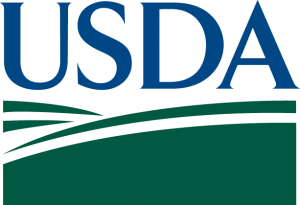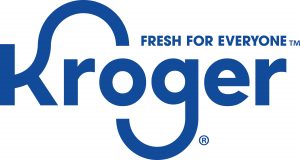FDA Rules Tara Flour Fails to Meet GRAS Standard
 The U.S. Food and Drug Administration has determined that tara flour in human food does not meet the Generally Recognized As Safe (or GRAS) standard and is an unapproved food additive. The FDA’s assessment of the ingredient is detailed in a memo added to the agency’s public inventory. Increased transparency of our assessment of ingredients in the food supply is part of our approach to enhance food chemical safety.
The U.S. Food and Drug Administration has determined that tara flour in human food does not meet the Generally Recognized As Safe (or GRAS) standard and is an unapproved food additive. The FDA’s assessment of the ingredient is detailed in a memo added to the agency’s public inventory. Increased transparency of our assessment of ingredients in the food supply is part of our approach to enhance food chemical safety.
Under the Federal Food, Drug, and Cosmetic (FD&C) Act, any ingredient used or intended for use in food must be authorized by the FDA for use as a food additive unless that use is Generally Recognized As Safe or GRAS by qualified experts or meets a listed exception to the food additive definition in the FD&C Act. An unapproved food additive is deemed to be unsafe under the FD&C Act.
In 2022, Daily Harvest used tara flour in a leek and lentil crumble product which was associated with roughly 400 adverse event reports. The firm took prompt action to voluntarily recall the product and conduct its own root cause analysis, during which they identified tara flour as a possible contributor to the illnesses. To date, the FDA has found no evidence that tara flour caused the outbreak; however, it did prompt the agency to evaluate the regulatory status of this food ingredient.
The FDA’s evaluation revealed that there is not enough data on the use of tara flour in food, or a history of its safe use, to consider it GRAS. There is no food additive regulation authorizing the use of tara flour in food. Uses of food ingredients that are not GRAS, not authorized as food additives, and not excepted from the Federal Food, Drug, and Cosmetic (FD&C) Act’s food additive definition are unapproved food additives. Food that is, or contains, an unsafe food additive is considered adulterated.
Manufacturers who are considering using tara flour as an ingredient in food are responsible for ensuring that its use is safe and lawful and are encouraged to consult with the FDA. At this time, the FDA is not aware of evidence that shows that tara flour is a food ingredient being developed domestically or that there are any products containing tara flour that are currently being manufactured in the United States.
The FDA instituted screening at ports of entry for tara flour used as an ingredient in imported food or imported for sale in bulk. The agency has not detected any recent shipments of that flour in imported products as of today.
The FDA remains committed to monitoring new ingredients in the food supply to ensure they meet relevant safety standards. The FDA’s assessment of chemicals in the food supply is part of our commitment to food safety and public health.
For more news of interest to the food safety industry, subscribe to Gourmet News.
USDA Finalizes Policy on Declaring Salmonella in Raw Breaded Stuffed Chicken Products
 The U.S. Department of Agriculture’s Food Safety and Inspection Service has made its final determination to declare Salmonella an adulterant in raw breaded stuffed chicken products when they exceed a specific threshold (1 colony forming unit per gram or higher) for Salmonella contamination.
The U.S. Department of Agriculture’s Food Safety and Inspection Service has made its final determination to declare Salmonella an adulterant in raw breaded stuffed chicken products when they exceed a specific threshold (1 colony forming unit per gram or higher) for Salmonella contamination.
This final determination is part of FSIS’ broader efforts to reduce Salmonella illnesses associated with the raw poultry supply in the United States. FSIS intends to address Salmonella contamination in other raw poultry products later this year.
“Under President Biden’s leadership, USDA is taking significant steps toward keeping American consumers safe from foodborne illness,” said Agriculture Secretary Tom Vilsack. “This final determination marks the first time that Salmonella is being declared an adulterant in a class of raw poultry products. This policy change is important because it will allow us to stop the sale of these products when we find levels of Salmonella contamination that could make people sick.”
Under this determination, FSIS will consider to be adulterated any raw breaded stuffed chicken products that include a chicken component that tested positive for Salmonella at 1 CFU per gram or higher.
FSIS will carry out verification procedures, including sampling and testing of the raw incoming chicken component of these products prior to stuffing and breading, to ensure producing establishments control Salmonella in these products. If the chicken component in these products does not meet this standard, the product lot represented by the sampled component would not be permitted to be used to produce the final raw breaded stuffed chicken products. The determination, including FSIS’ sampling and verification testing, will be effective 12 months after its publication in the Federal Register.
In determining that Salmonella is an adulterant in raw breaded stuffed chicken products, FSIS considered the best available science and data using similar criteria as in its 1994, 1999, and 2011 E. coli policymaking. When FSIS declared seven Shiga toxin-producing Escherichia coli strains to be adulterants in select raw beef products, it relied on several factors, including the available information on serotypes linked to human illnesses, infectious dose, severity of illnesses and typical consumer preparation practices associated with a product. The breaded stuffed chicken products determination relied on the same factors.
FSIS and its public health partners have investigated 14 Salmonella outbreaks and approximately 200 illnesses associated with these products since 1998. The most recent outbreak was in 2021 and resulted in illnesses across 11 states. These products account for less than 0.15% of the total domestic chicken supply, but outbreaks linked to these products represented approximately 5% of all chicken-associated outbreaks in the U.S. during 1998-2020.
Raw breaded stuffed chicken products are pre-browned and may appear cooked, but the chicken is raw. The products are typically cooked by consumers from a frozen state, which increases the risk of the product not reaching the internal temperature needed to destroy Salmonella. Despite FSIS’ and industry’s efforts to improve labeling, these products continue to be associated with Salmonella illness outbreaks.
The Centers for Disease Control and Prevention estimates that Salmonella bacteria cause over 1 million human infections in the United States each year. Food is the leading source of Salmonella infections and poultry products are one of the leading sources of foodborne Salmonella illnesses.
FSIS will continue to evaluate and, if necessary, refine its policies and standards related to the oversight of raw breaded stuffed chicken products as advances in science and technology related to pathogen levels, serotypes, laboratory methods and infectious dose become available.
This final determination builds on USDA’s continued efforts under the Biden-Harris Administration to protect American consumers, whether to ensure food safety or prevent false and misleading label claims. Earlier this year, USDA published a final rule allowing the voluntary “Product of USA” claim to be applied only to those FSIS-regulated products that are derived from animals born, raised, slaughtered and processed in the United States. USDA is currently re-evaluating the FSIS guideline for animal-raising claims to better ensure that they are adequately substantiated.
To view the final determination, visit the FSIS Federal Register Rules webpage.
For more news of interest to the poultry industry, subscribe to Gourmet News.
Kroger, Albertsons Amend C&S Agreement in Proposed Merger
 The Kroger Co. and Albertsons Companies Inc. have amended their definitive agreement with C&S Wholesale Grocers, LLC for the sale of assets in connection with their proposed merger previously announced on Oct. 14, 2022. This amended package modifies and builds on the initial divestiture package that was announced on Sept. 8, 2023.
The Kroger Co. and Albertsons Companies Inc. have amended their definitive agreement with C&S Wholesale Grocers, LLC for the sale of assets in connection with their proposed merger previously announced on Oct. 14, 2022. This amended package modifies and builds on the initial divestiture package that was announced on Sept. 8, 2023.
The amended divestiture package responds to concerns raised by federal and state antitrust regulators regarding the original agreement. The enhanced divestiture package includes a modified and expanded store set and additional non-store assets to further enable C&S to operate competitively following the completion of the proposed merger. The companies believe the amended divestiture package will bolster their position in regulatory challenges to the proposed merger, including pending court proceedings.
 “We have reached an agreement with C&S for an updated divestiture package that maintains Kroger’s commitments to customers, associates and communities, addresses concerns raised by regulators, and will further ensure that C&S can successfully operate the divested stores as they are operated today,” said Rodney McMullen, Kroger’s chairman and CEO. “Importantly, the updated divestiture plan continues to ensure no stores will close as a result of the merger and that all frontline associates will remain employed, all existing collective bargaining agreements will continue, and associates will continue to receive industry-leading health care and pension benefits alongside bargained-for wages. Our proposed merger with Albertsons will bring lower prices and more choices to more customers and secure the long-term future of unionized grocery jobs.”
“We have reached an agreement with C&S for an updated divestiture package that maintains Kroger’s commitments to customers, associates and communities, addresses concerns raised by regulators, and will further ensure that C&S can successfully operate the divested stores as they are operated today,” said Rodney McMullen, Kroger’s chairman and CEO. “Importantly, the updated divestiture plan continues to ensure no stores will close as a result of the merger and that all frontline associates will remain employed, all existing collective bargaining agreements will continue, and associates will continue to receive industry-leading health care and pension benefits alongside bargained-for wages. Our proposed merger with Albertsons will bring lower prices and more choices to more customers and secure the long-term future of unionized grocery jobs.”
The proposed merger will create meaningful and measurable benefits for America’s consumers, Kroger and Albertsons Cos. associates, and communities that both Kroger and Albertsons Cos. serve by expanding access to fresh, affordable food and establishing a more compelling alternative to large, non-union retailers. This updated divestiture plan marks another next step toward the completion of the merger by adding a well-capitalized competitor into new geographies.
“We are confident this expanded divestiture package will provide the stores, supporting assets and expert operators needed to ensure these stores continue to successfully serve their communities for many generations to come,” said Eric Winn, CEO of C&S. “C&S is a leader in the grocery industry, and we are excited for this expansion of our current retail business, which is a key part of our long-term growth strategy. We look forward to welcoming storied banners, quality private label brands, and a team of experienced retail associates into the C&S family. This amended agreement enables C&S’s heritage of selection, value and customer service to continue our legacy of braggingly happy customers.”
Transaction Details
The updated divestiture package increases the total store count by 166 to include 579 stores that will be sold to, and continue operating as they do today by the new owner, C&S.
It maintains the sale to C&S of the QFC, Mariano’s and Carrs banner names. Under the amended agreement, Kroger will also sell the Haggen banner to C&S. Stores currently under these banners that are retained by Kroger will be re-bannered into one of the retained Kroger or Albertsons Cos. banners following the close of the transaction with C&S.
Under the amended agreement, C&S will license the Albertsons banner in California and Wyoming and the Safeway banner in Arizona and Colorado. In these states, Kroger will re-banner the retained Albertsons and Safeway bannered stores following the closing of the merger. Kroger will maintain the Albertsons and Safeway banners in the remaining states.
The number of stores contained in the divestiture plan by geography is as follows:
- WA: 124 Albertsons Cos. and Kroger stores
- CA: 63 Albertsons Cos. stores
- CO: 91 Albertsons Cos. stores
- OR: 62 Albertsons Cos. and Kroger stores
- TX/LA: 30 Albertsons Cos. stores
- AZ: 101 Albertsons Cos. stores
- NV: 16 Albertsons Cos. stores
- IL: 35 Albertsons Cos. and Kroger stores
- AK: 18 Albertsons Cos. stores
- ID: 10 Albertsons Cos. stores
- NM: 9 Albertsons Cos. stores
- MT/UT/WY: 11 Albertsons Cos. stores
- DC/MD/VA/DE: 9 Harris Teeter stores
The above stores (regardless of banner) will be sold by Kroger to C&S following the closing of the merger with Albertsons Cos.
In connection with the additional stores being conveyed to C&S, the updated divestiture package includes increased distribution capacity through a combination of different and larger facilities as well as expanded transition services agreements to support C&S and the addition of one dairy facility.
The amended divestiture package also expands the corporate and office infrastructure provided to C&S given the increased store set to ensure C&S can continue to operate the divested stores competitively and cohesively. All fuel centers and pharmacies associated with the divested stores will remain with the stores and continue to operate.
The amended agreement maintains the divestiture of private label brands Debi Lilly Design, Primo Taglio, Open Nature, ReadyMeals and Waterfront Bistro to C&S. The revised agreement also provides C&S with access to the Signature and O Organics private label brands.
The updated plan will:
- Extend a competitor to new geographies through the sale of stores to a well-capitalized buyer that is led by seasoned operators with a strong balance sheet and a sound business plan;
- Ensure that no stores will close as a result of the merger;
- Maintain all current collective bargaining agreements, which include industry-leading healthcare and pension benefits, bargained-for wages, and ensuring frontline associates remain employed; and
- Commit to invest in associates and stores for the long term.
Subject to fulfillment of customary closing conditions, including Federal Trade Commission and/or other governmental clearance, and the completion of the Kroger-Albertsons merger, C&S will pay Kroger an all-cash consideration of approximately $2.9 billion, including customary adjustments.
Merger creates meaningful benefits for customers, associates and communities
The proposed merger with Albertsons Cos. will produce meaningful and measurable benefits for customers, associates and communities across the country. The combined company committed that no stores, distribution centers or manufacturing facilities will close as a result of the merger.
Customers will benefit from lower prices and more choices following the merger close. Kroger committed to investing $500 million to begin lowering prices day one post-close, and an additional $1.3 billion to improve Albertsons Cos.’ stores.
This commitment builds on Kroger’s long track record of reducing prices every year, with $5 billion invested to lower prices since 2003. Customers will also have access to more favorite items from their own communities, as Kroger committed to increasing the number of local products in its stores by 10 percent post-close. This merger creates more opportunities for families to access the fresh, affordable foods they love.
As a combined company, Kroger committed to investing $1 billion to raise wages and comprehensive benefits. This builds on the incremental $2.4 billion Kroger invested to improve wages and comprehensive benefits since 2018. To provide the best holistic support for each associate, the company will also extend continuing education and financial literacy benefits to all associates following the merger close. As union membership continues to decline nationwide, especially in the grocery industry, this merger is the best way to secure union jobs. Kroger has added more than 100,000 good-paying union jobs since 2012.
The proposed merger will allow the combined company to invest more deeply to end hunger in communities across America. In 2023, Kroger committed to donating 10 billion meals to families across the United States by 2030. Bringing these companies together provides one more step toward achieving communities that are free from hunger and food waste.
Kroger and Albertsons Cos. remain committed to defending the merger in court and unlocking the many benefits it offers.
Read more about the combined company’s commitment to customers, associates and communities at www.krogeralbertsons.com
For more news of interest to the grocery industry, subscribe to Gourmet News.